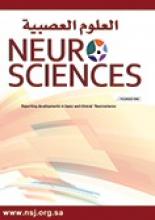To the Editor
We were interested to read the article by Xu et al1 on a single-center retrospective study of the risk factors of cerebral edema after aneurysm clipping in patients with aneurysmal subarachnoid hemorrhage.1 Cerebral edema after aneurysm clipping was found to be associated with recurrence of hemorrhage, posterior location of the aneurysm, Fisher grade 3-4, World Federation of Neurosurgical Societies (WFNS) grade II, Hunt-Hess grade III-IV, concomitant hypertension, duration from onset of hemorrhage to surgery ≥12 h, and concomitant hematoma.1 The study is excellent, but some points should be discussed.
The first point is that several factors influencing or favouring cerebral edema after aneurysm clipping were not included in the analysis. These factors include preoperative comorbidities or comedications predisposing to cerebral edema, postoperative systemic complications, bleeding volume, ventricular intrusion, duration of surgery and anesthesia, experience of the operating neurosurgeons, mechanical pressure on the brain parenchyma during surgery, definition of cerebral edema, latency period between surgery and performance of cerebral computed tomography (CCT), number and duration of vasospasms after surgery, presence or absence of ischemic stroke due to vasospasm, and type of probe used to measure intracerebral pressure (ICP).
The second point is that the threshold above which ICP was considered elevated or normal was not specified. Since cerebral edema was also defined by an elevated ICP, knowledge of this threshold is crucial.
The third point is that it was not defined what the authors meant by “expanded brain pathways”. Do they mean expansion of specific pathways or specific brain regions? Do they mean increased connectivity?
The fourth point refers to the cerebral imaging method. According to the methods section, cerebral edema was only assessed on postoperative CCT scans. However, cerebral edema can be assessed more accurately by MRI of the brain (vasogenic edema). We should know whether all patients really only underwent postoperative CCT or whether some of the included patients also underwent multimodal cerebral MRI and whether there is a difference in the accuracy of detecting cerebral edema between CCT and cMRI?
The fifth point is the retrospective design of the study. Retrospective designs have the disadvantage that some data may be missing, the accuracy of the data cannot be easily verified, desired missing or new data can no longer be generated and references to certain studies are often not comprehensible. A retrospective design also does not allow for follow-up studies. We should know how many patients had to be excluded due to missing data, how many were included despite missing data and to what extent this influenced the results.
In summary, this interesting study has limitations that put the results and their interpretation into perspective. Addressing these limitations could strengthen the conclusions and support the message of the study. All unresolved questions must be clarified before readers can uncritically accept the study’s message. As cerebral edema after aneurysm clipping is multicausal, all possible causes should be included in the analysis before definitively identifying the risk factors for postoperative cerebral edema.
Sounira Mehri, Biochemistry Laboratory, LR12ES05 Nutrition-Functional Foods and Vascular Health, Faculty of Medicine, Monastir, Tunisia
Josef Finsterer, Department of Neurology, Neurology & Neurophysiology Center, Vienna, Austria
Reply from the Author
No reply from the author
- Copyright: © Neurosciences
Neurosciences is an Open Access journal and articles published are distributed under the terms of the Creative Commons Attribution-NonCommercial License (CC BY-NC). Readers may copy, distribute, and display the work for non-commercial purposes with the proper citation of the original work.
References
- 1.↵






